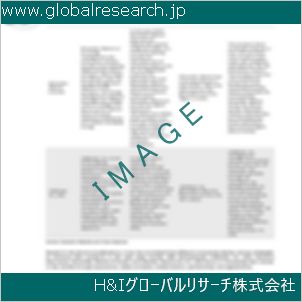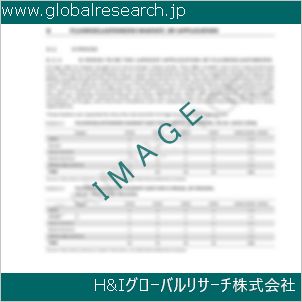Table of Contents
1 Industry Overview of Phosphoricacid
1.1 Definition and Specifications of Phosphoricacid
1.1.1 Definition of Phosphoricacid
1.1.2 Specifications of Phosphoricacid
1.2 Classification of Phosphoricacid
1.3 Applications of Phosphoricacid
1.3.1 Nuclear Application
1.3.2 Non-Nuclear Application
1.4 Industry Chain Structure of Phosphoricacid
1.5 Industry Overview and Major Regions Status of Phosphoricacid
1.5.1 Industry Overview of Phosphoricacid
1.5.2 Global Major Regions Status of Phosphoricacid
1.6 Industry Policy Analysis of Phosphoricacid
1.7 Industry News Analysis of Phosphoricacid
2 Manufacturing Cost Structure Analysis of Phosphoricacid
2.1 Raw Material Suppliers and Price Analysis of Phosphoricacid
2.2 Equipment Suppliers and Price Analysis of Phosphoricacid
2.3 Labor Cost Analysis of Phosphoricacid
2.4 Other Costs Analysis of Phosphoricacid
2.5 Manufacturing Cost Structure Analysis of Phosphoricacid
2.6 Manufacturing Process Analysis of Phosphoricacid
3 Technical Data and Manufacturing Plants Analysis of Phosphoricacid
3.1 Capacity and Commercial Production Date of Global Phosphoricacid Major Manufacturers in 2023
3.2 Manufacturing Plants Distribution of Global Phosphoricacid Major Manufacturers in 2023
3.3 R&D Status and Technology Source of Global Phosphoricacid Major Manufacturers in 2023
3.4 Raw Materials Sources Analysis of Global Phosphoricacid Major Manufacturers in 2023
4 Capacity, Production and Revenue Analysis of Phosphoricacid by Regions, Types and Manufacturers
4.1 Global Capacity, Production and Revenue of Phosphoricacid by Regions 2019-2024
4.2 Global and Major Regions Capacity, Production, Revenue and Growth Rate of Phosphoricacid 2019-2024
4.3 Global Capacity, Production and Revenue of Phosphoricacid by Types 2019-2024
4.4 Global Capacity, Production and Revenue of Phosphoricacid by Manufacturers 2019-2024
5 Price, Cost, Gross and Gross Margin Analysis of Phosphoricacid by Regions, Types and Manufacturers
5.1 Price, Cost, Gross and Gross Margin Analysis of Phosphoricacid by Regions 2019-2024
5.2 Price, Cost, Gross and Gross Margin Analysis of Phosphoricacid by Types 2019-2024
5.3 Price, Cost, Gross and Gross Margin Analysis of Phosphoricacid by Manufacturers 2019-2024
6 Consumption Volume, Consumption Value and Sale Price Analysis of Phosphoricacid by Regions, Types and Applications
6.1 Global Consumption Volume and Consumption Value of Phosphoricacid by Regions 2019-2024
6.2 Global and Major Regions Consumption Volume, Consumption Value and Growth Rate of Phosphoricacid 2019-2024
6.3 Global Consumption Volume and Consumption Value of Phosphoricacid by Types 2019-2024
6.4 Global Consumption Volume and Consumption Value of Phosphoricacid by Applications 2019-2024
6.5 Sale Price of Phosphoricacid by Regions 2019-2024
6.6 Sale Price of Phosphoricacid by Types 2019-2024
6.7 Sale Price of Phosphoricacid by Applications 2019-2024
6.8 Market Share Analysis of Phosphoricacid by Different Sale Price Levels
7 Supply, Import, Export and Consumption Analysis of Phosphoricacid
7.1 Supply, Consumption and Gap of Phosphoricacid 2019-2024
7.2 Global Capacity, Production, Price, Cost, Revenue, Supply, Import, Export and Consumption of Phosphoricacid 2019-2024
7.3 USA Capacity, Production, Price, Cost, Revenue, Supply, Import, Export and Consumption of Phosphoricacid 2019-2024
7.4 EU Capacity, Production, Price, Cost, Revenue, Supply, Import, Export and Consumption of Phosphoricacid 2019-2024
7.5 China Capacity, Production, Price, Cost, Revenue, Supply, Import, Export and Consumption of Phosphoricacid 2019-2024
7.6 Japan Capacity, Production, Price, Cost, Revenue, Supply, Import, Export and Consumption of Phosphoricacid 2019-2024
8 Major Manufacturers Analysis of Phosphoricacid
8.1 Manufacturer One
8.1.1 Company Profile
8.1.2 Product Picture and Specifications
8.1.2.1 Type I
8.1.2.2 Type II
8.1.2.3 Type III
8.1.3 Capacity, Production, Price, Cost, Gross and Revenue
8.1.4 Contact Information
8.2 Manufacturer Two
8.2.1 Company Profile
8.2.2 Product Picture and Specifications
8.2.2.1 Type I
8.2.2.2 Type II
8.2.2.3 Type III
8.2.3 Capacity, Production, Price, Cost, Gross and Revenue
8.2.4 Contact Information
8.3 Manufacturer Three
8.3.1 Company Profile
8.3.2 Product Picture and Specifications
8.3.2.1 Type I
8.3.2.2 Type II
8.3.2.3 Type III
8.3.3 Capacity, Production, Price, Cost, Gross and Revenue
8.3.4 Contact Information
8.4 Manufacturer Four
8.4.1 Company Profile
8.4.2 Product Picture and Specifications
8.4.2.1 Type I
8.4.2.2 Type II
8.4.2.3 Type III
8.4.3 Capacity, Production, Price, Cost, Gross and Revenue
8.4.4 Contact Information
8.5 Manufacturer Five
8.5.1 Company Profile
8.5.2 Product Picture and Specifications
8.5.2.1 Type I
8.5.2.2 Type II
8.5.2.3 Type III
8.5.3 Capacity, Production, Price, Cost, Gross and Revenue
8.5.4 Contact Information
…
9 Marketing Trader or Distributor Analysis of Phosphoricacid
9.1 Marketing Channels Status of Phosphoricacid
9.2 Traders or Distributors with Contact Information of Phosphoricacid by Regions
9.3 Ex-work Price, Channel Price and End Buyer Price Analysis of Phosphoricacid
9.4 Regional Import, Export and Trade Analysis of Phosphoricacid
10 Industry Chain Analysis of Phosphoricacid
10.1 Upstream Major Raw Materials Suppliers Analysis of Phosphoricacid
10.1.1 Major Raw Materials Suppliers with Contact Information Analysis of Phosphoricacid
10.1.2 Major Raw Materials Suppliers with Supply Volume Analysis of Phosphoricacid by Regions
10.2 Upstream Major Equipment Suppliers Analysis of Phosphoricacid
10.2.1 Major Equipment Suppliers with Contact Information Analysis of Phosphoricacid
10.2.2 Major Equipment Suppliers with Product Pictures Analysis of Phosphoricacid by Regions
10.3 Downstream Major Consumers Analysis of Phosphoricacid
10.3.1 Major Consumers with Contact Information Analysis of Phosphoricacid
10.3.2 Major Consumers with Consumption Volume Analysis of Phosphoricacid by Regions
10.4 Supply Chain Relationship Analysis of Phosphoricacid
11 Development Trend of Analysis of Phosphoricacid
11.1 Capacity, Production and Revenue Forecast of Phosphoricacid by Regions and Types
11.1.1 Global Capacity, Production and Revenue of Phosphoricacid by Regions 2024-2029
11.1.2 Global and Major Regions Capacity, Production, Revenue and Growth Rate of Phosphoricacid 2024-2029
11.1.3 Global Capacity, Production and Revenue of Phosphoricacid by Types 2024-2029
11.2 Consumption Volume and Consumption Value Forecast of Phosphoricacid by Regions, Types and Applications
11.2.1 Global Consumption Volume and Consumption Value of Phosphoricacid by Regions 2024-2029
11.2.2 Global and Major Regions Consumption Volume, Consumption Value and Growth Rate of Phosphoricacid 2024-2029
11.2.3 Global Consumption Volume and Consumption Value of Phosphoricacid by Types 2024-2029
11.2.4 Global Consumption Volume and Consumption Value of Phosphoricacid by Applications 2024-2029
11.3 Supply, Import, Export and Consumption Forecast of Phosphoricacid
11.3.1 Supply, Consumption and Gap of Phosphoricacid 2024-2029
11.3.2 Global Capacity, Production, Price, Cost, Revenue, Supply, Import, Export and Consumption of Phosphoricacid 2024-2029
11.3.3 USA Capacity, Production, Price, Cost, Revenue, Supply, Import, Export and Consumption of Phosphoricacid 2024-2029
11.3.4 EU Capacity, Production, Price, Cost, Revenue, Supply, Import, Export and Consumption of Phosphoricacid 2024-2029
11.3.5 China Capacity, Production, Price, Cost, Revenue, Supply, Import, Export and Consumption of Phosphoricacid 2024-2029
11.3.6 Japan Capacity, Production, Price, Cost, Revenue, Supply, Import, Export and Consumption of Phosphoricacid 2024-2029
12 New Project Investment Feasibility Analysis of Phosphoricacid
12.1 New Project SWOT Analysis of Phosphoricacid
12.2 New Project Investment Feasibility Analysis of Phosphoricacid
13 Conclusion of the Global Phosphoricacid (CAS 7664-38-2) Industry 2024 Market Research Report
| ※参考情報 リン酸(Phosphoric acid、CAS 7664-38-2)は、化学式 H₃PO₄ で表される無機化合物で、リンと酸素から成り立つ強酸の一種です。色は無色透明で、水に非常に溶けやすく、酸味を持っています。リン酸は自然界に存在し、食品、肥料、医薬品、工業製品など広範な分野で用いられています。 リン酸はその化学構造から、三価の酸であることが特徴です。三つの水素原子はそれぞれ酸性を示し、これによりリン酸のpHは7未満の酸性を持ちます。リン酸は、無機酸の中でも比較的穏やかな性質を持っており、生物学的にも重要な役割を果たしています。特に、ATP(アデノシン三リン酸)などのエネルギー供給物質やDNA、RNAの構成要素として存在します。 リン酸の種類には、主に商業的に利用されるリン酸塩や、様々な用途に応じて変化させたリン酸エステルがあります。リン酸塩は、リン酸と金属イオンによって形成され、肥料や洗浄剤、食品添加物などに利用されています。リン酸エステルは、脂肪酸とリン酸が結合したもので、特に界面活性剤や乳化剤として活用されています。 リン酸は多くの用途で用いられています。工業界においては、主に肥料の製造に使用されます。リン酸は植物にとって必須の栄養素であり、特に根の成長を促進します。肥料としての利用は、リン酸を含む三大栄養素の一つである窒素、カリウムとともに行われます。リン酸肥料は、土壌のpHを管理し、作物の健康な成長を支えるために欠かせません。 また、リン酸は食品業界でも重要な役割を果たしています。食品添加物として使用され、酸味料や保存料としての機能を持っています。特に、清涼飲料水や加工食品において、風味を引き立てるために広く使用されます。リン酸はまた、血中のカルシウムとリンのバランスを保つ上で必要不可欠な成分でもあります。 医薬品業界でもリン酸は重要です。リン酸は、いくつかの医薬品の製造にも利用されています。たとえば、リン酸は医薬品のpH調整剤としての役割を果たし、より効果的な吸収を促進することができます。また、リン酸を含む化合物は、消化器系の薬剤としても用いられています。 結晶状態のリン酸は、リン酸の性質が変化することがあります。無水リン酸(P₂O₅)は、水分がない状態のリン酸で、高い吸湿性を持っています。この特性から、乾燥剤や吸湿剤として利用されることもあります。また、有機リン酸(例えば、リン酸ジエステル)は、農薬や防腐剤としての利用もされています。 リン酸の製造には主に二つの方法があります。一つは、リン鉱石からの製造であり、これは酸を使用してリン鉱石からリン酸を抽出するプロセスです。もう一つは、化学合成による製造であり、主に硫酸からリン酸を生成する工程が取られます。 環境問題に対しても、リン酸は扱いに注意が必要です。過剰なリン酸の使用は、土壌や水質の汚染を引き起こし、富栄養化を進める要因となります。そのため、農業や食品産業ではリン酸の適切な使用管理が求められています。リン酸の利用を効率的に行い、持続可能な形で環境保全を図ることが重要です。 リン酸は内外で幅広く利用されているため、その技術についての研究も進められています。特に、リン酸を基にした新しい素材や化合物の開発が期待されており、これにより新たな用途が見込まれています。たとえば、バイオテクノロジー分野では、リン酸を利用した生物分解可能な材料の開発や、循環型経済に向けたリン資源の再利用技術が注目を集めています。 このように、リン酸は化学的な特性から多様な利用方法がどのように進化しているか、またそれに伴う技術革新がどのように社会に影響を与えているかを考えることは、今後の持続可能な発展を見据えた重要な課題であると言えるでしょう。リン酸は我々の生活に欠かせない物質の一つですので、その理解を深め、適切に管理しながら使用していくことが重要です。 |
❖ 免責事項 ❖
http://www.globalresearch.jp/disclaimer












